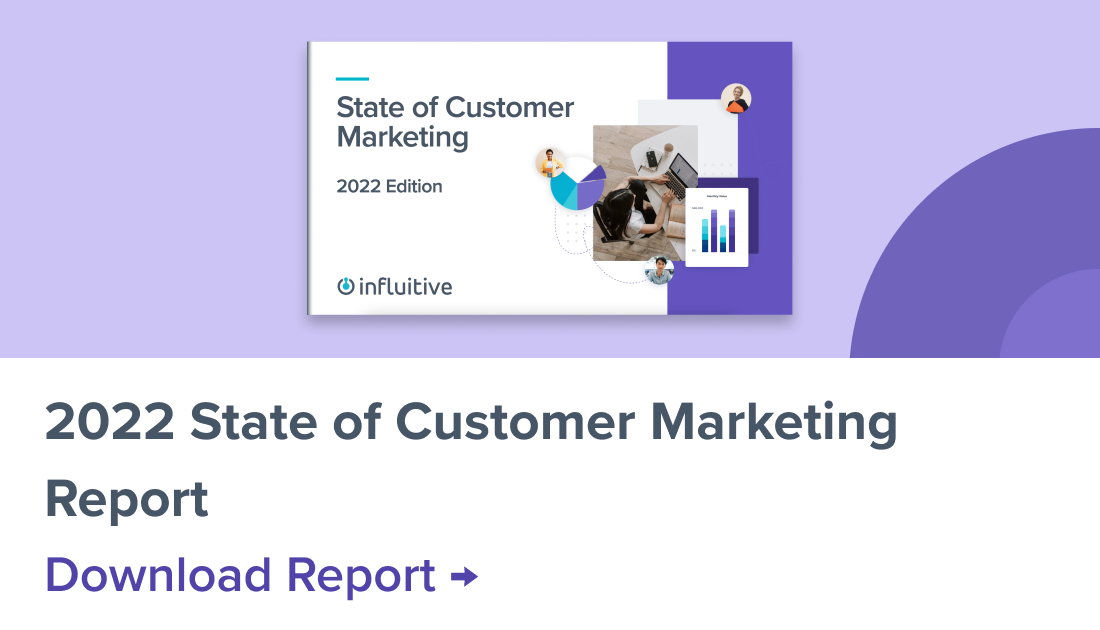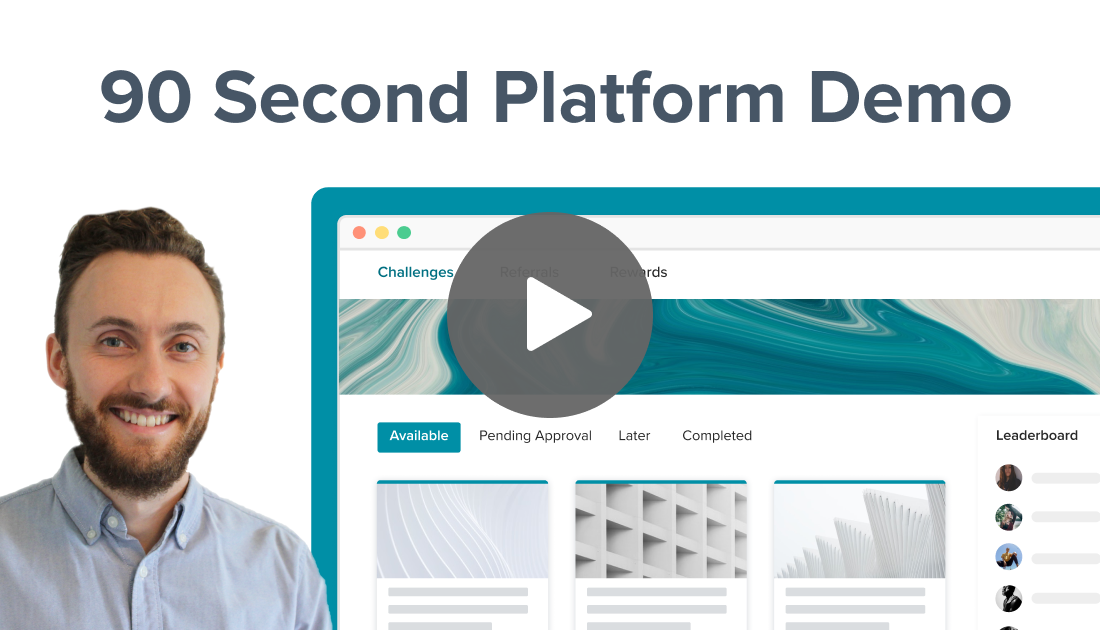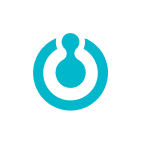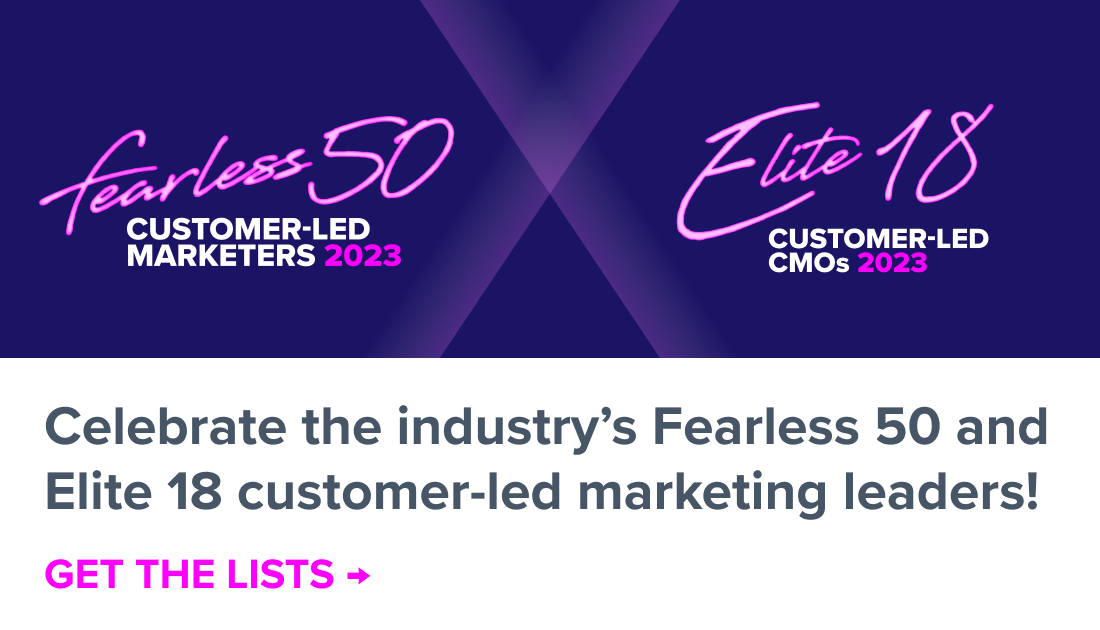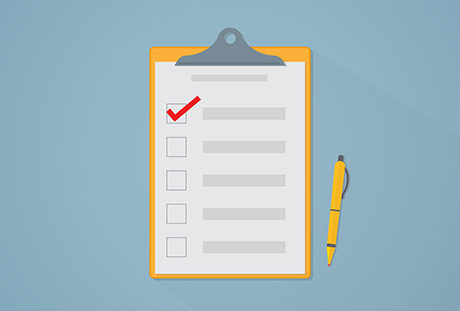This is the fourth post in a series about launching a customer advocacy program.
In the first post in the series, we looked at building a team. The second post looked at the plumbing or data integrity of the contacts and customers in the program. The third post focused on best practices for communicating with your advocates.
In the B2B technology world, Q4 is similar to retail in that a disproportionate amount of business happens at the end of the year. Having joined Crimson Hexagon in Q4 in 2015, I realized that it is a challenging time to meet with customers, as most discussions at this time of year revolve around business decisions.
However, I wanted to get a jumpstart on the 2016 advocacy program, so we needed to gather customer feedback. The quickest way to do this was to survey the main points of contact at each account.
Even with the limitations of surveys, we received lots of actionable data, and the good news is only 1% of responses were negative.
Below, I’ll outline a few tips for creating effective surveys that will give you insights for launching a successful customer advocacy program.
Tips for effectively collecting customer feedback
The survey was pretty simple, with just 6-questions and no branching. As it was sent in December, we just did one send.
The questions covered three areas:
- Satisfaction with the platform and support
- Use case and level of activity
- Customer programs that would be of value
To incentivize participation, 10 people were chosen at random to receive their choice of a Crimson Hexagon sweatshirt, a Hexagon Drone or the just-published book on Social Media Analytics.
How we turned customer feedback into advocacy program insights
There were a few key takeaways from the survey:
1. Platform satisfaction
More than half of respondents use the Crimson Hexagon platform for marketing research use cases, and this group scored Ease of Use and Quality of Analysis Results higher than those using the platform for other use cases.
Only 60% rated the online Help Center as good or very good and 25% were indifferent. Given these results, we wondered if there was a large percentage of customers who were not even aware of the Help Center. As a result, we have accelerated the speed and scope of changes to the Help Center we were already planning to make, and the Help Center was re-launched in February 2016.
Using this information can help you decide what other educational opportunities you should be offering to customers.
2. Usage/activity level
Personalized communications is important in an advocacy program. We asked people about their use case, types of monitors they build and how often they are in the platform. Other things we look at are title, relationship (i.e. decision-maker, user, admin) and even geography. Based on the survey results, we defined platform users by the number of social media monitors created using our software.
Active: created a social media monitor in the past 3 months
Engaged: created a monitor in the past month
Power User: created average of 1 monitor per week over the past 1-3 months
This was just a start and since then our ability to identify user types has gotten much more sophisticated.
3. Customer programs of value
An advocacy program can offer a wide range of programs, and we proposed 10 in the areas of Product Development, Community/Events and Communications.
We asked customers what they would find most valuable, and this chart is based on percentages.
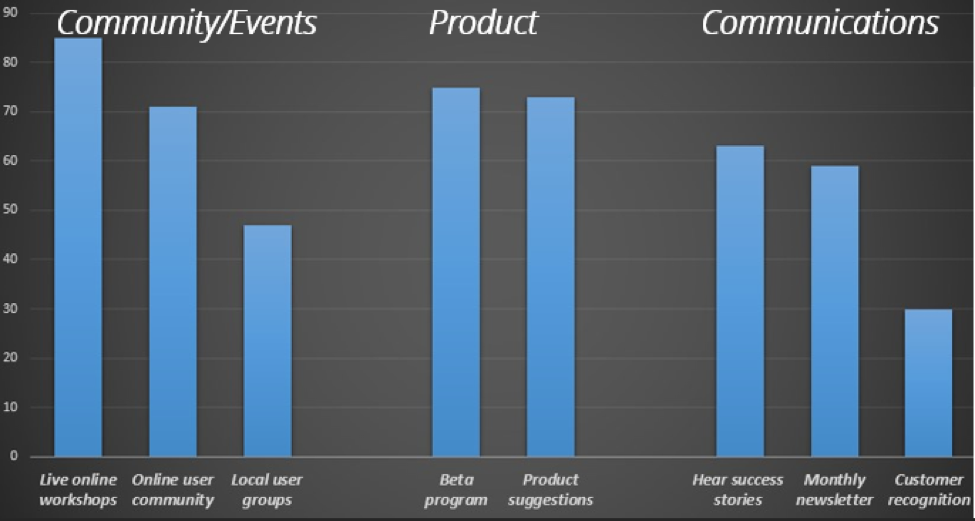
Here were the insights we gleaned and the impact it had on our programs planning.
1. Our customers are more interested in online than on-site interaction.
Impact: We doubled down and renovated/enhances the existing Help Center, put more effort into the online community, added webinars and brought on an advocacy platforms. Even though it did not score as high as other items, we decided to hold events in the cities with the most customers (London, San Francisco, New York, Los Angeles, Washington DC and Chicago).
2. Involvement in product-related activities scored very high
Impact: To systematically receive product feedback through Intercom, an in-app messaging product (see post #3 in this series for more details).
3. Customers wanted to hear how others are using the platform
Impact: Rather than a rigid first-Wednesday-of-the-month customer communication, we shifted our communications to come out about every six weeks and focused the content on customer stories, product enhancements and upcoming workshops and events.
12-month update: key learnings and building a better survey
It will take a while to implement the new programs, and in December 2016 we will send another survey to assess existing programs and explore the viability of new ones.
This time, we are:
- Going to limit the survey to the top 20% of the most active platform users and customers most engaged in advocacy activities
- Assessing interest in raising their professional profile
- Assessing which skills are most important in their role
Also, now that product is asking for feedback through in-app messaging and engineering provides us with utilization data, we can skip those questions.
Surveys help provide a roadmap and create urgency to execute on programs. Presenting similar surveys to your advocates may help you do the same.








